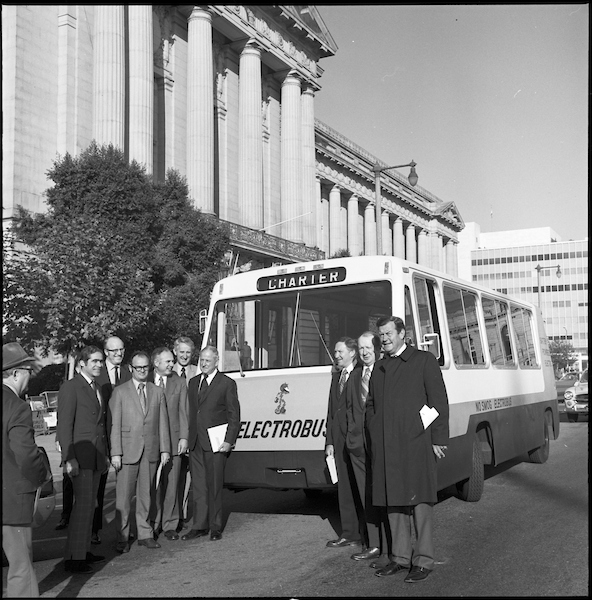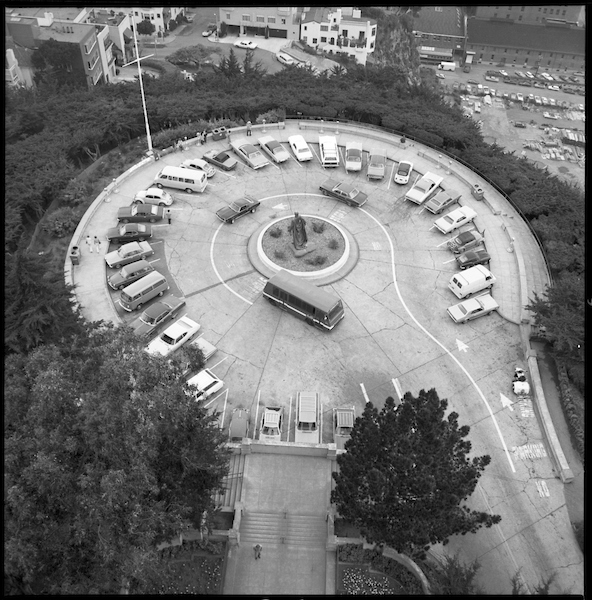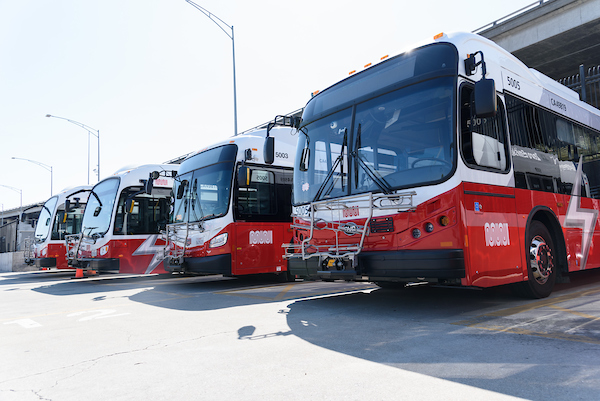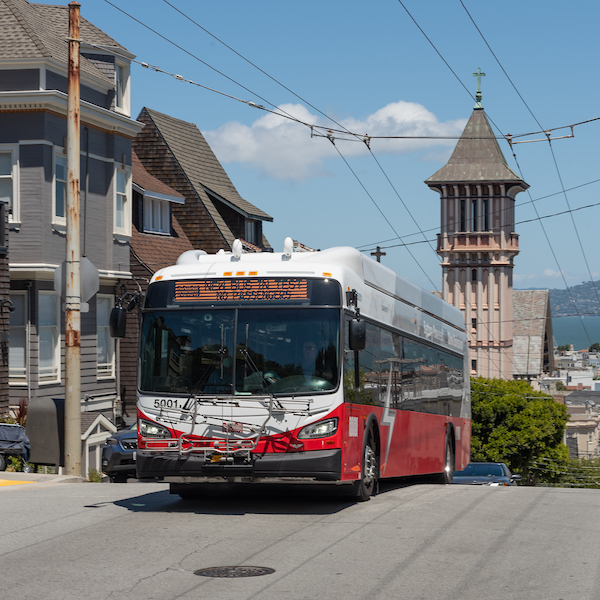By Jeremy Menzies
Battery-electric buses and cars have been hitting the streets around the nation in recent years, and here in San Francisco, the SFMTA is currently running a pilot program to test battery powered buses across the system. The pilot analyzes not only the buses themselves, but also how the technology works in the real world of stop-and-go traffic and hill-climbing.
Surprising as it may seem, this pilot program is not the first time battery electric buses appeared on the streets of SF. Here’s a look back at one test that took place over 50 years ago.

While battery electric vehicles date back nearly 200 years to the 1830s, it took over a century for them to see widespread commercial success due to the limitations of the battery technology.
One of the first times Muni tested a battery-powered bus was in November 1972. Dubbed the “Electrobus”, this small vehicle was tested on the 39 Coit route up Telegraph Hill. This route has historically been served by shorter than normal buses due to the tight turns and steep grades up the hill.

Loaded with sandbags to simulate the weight of passengers, the Electrobus climbed up the hill to the Coit Tower parking lot just like its gas-powered counterparts. While this bus never went into service, it was one of a handful of “alternative” buses Muni explored in the early ‘70s, including a steam bus and a flywheel-powered bus.

Today, the SFMTA is testing battery electric buses from four different manufacturers to see what the vehicles can do and to work out possible kinks in adopting the technology on a large scale.

These buses have been running on some of the city's hardest routes for months, from long stretches along the 9 San Bruno line to the steep hills of the 22 Fillmore, to determine their viability as an alternative to our hybrid-diesel buses.

Muni already operates the greenest fleet of any city in North America. Pollution from Muni makes up less than 0.001% of citywide emissions, while 30% of the city’s greenhouse gas emissions come from private vehicles. Riding transit is a sustainable way to travel, and we’re committed to our efforts to achieve a 100% zero-emissions transit fleet. Alongside trolley buses and other emerging technologies, battery-electric buses will play a critical role in a cleaner, greener future for Muni and all of San Francisco.
Published November 30, 2023 at 11:17PM
https://ift.tt/E4io8KM
Comments
Post a Comment